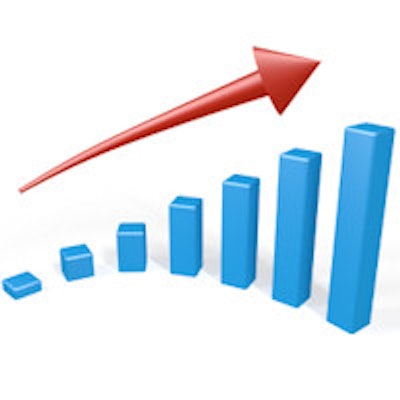
The U.S. will see a "modest" increase in healthcare spending through 2024, but the projected 5.8% annual rate of growth is much lower than the rapid pace seen prior to 2008, according to a new report from the U.S. Centers for Medicare and Medicaid Services (CMS).
Increased healthcare expenditures will be driven by economic growth following the recession, rising insurance premiums, and higher cost-sharing in employer-sponsored health insurance plans. The report was published online July 28 in Health Affairs.
Overall spending growth is primarily due to several factors, according to the authors:
- Costs related to the Patient Protection and Affordable Care Act (ACA)
- Economic growth that has rebounded since the recession
- The aging of the population, especially the baby-boomer generation
During the next decade, spending on healthcare is expected to grow 5.8% annually, rising to $5.4 trillion by 2024; spending was growing at a 9% annual rate in the three decades prior to 2008, the group noted. Healthcare spending as a share of the U.S. gross domestic product (GDP) is expected to grow from 17.4% in 2013 to 19.6% in 2024.
Spending projections for national healthcare for 2014-2024 were based on the annual forecast of CMS and the National Health Expenditure Accounts.
Overall spending
The report's lead author, CMS economist Sean Keehan, explained the ACA's dramatic effect on healthcare spending.
"After six years of national health spending growth hovering near historically low rates, we're projecting faster growth in health spending over the next decade reflecting expanded insurance coverage under the ACA, expectations of continued improvements in the economy, and population aging," Keehan said in a press release. "However, these projected growth rates are significantly lower than those observed over the three decades prior to the recent recession."
Primarily as a result of the eligibility expansion under the ACA, Medicaid spending grew 12% in 2014, and total Medicaid enrollment increased 13% to 66.5 million people. While the elderly and individuals with disabilities represent the smallest proportion of people in the Medicaid program, they account for the majority of spending, the authors wrote. Slower growth rates in Medicaid reflect stable economic conditions and lower unemployment.
The share of national health spending paid for by Medicare is projected to rise from 20.1% in 2013 to 22.5% in 2024. This is caused by an expected increase in enrollment of 19.1 million elderly Americans in the next decade and faster spending due to the aging of beneficiaries. During this time, the insured share of the U.S. population is expected to rise from 86% to 92.4%, according to the report.
Even with more people getting health coverage in 2014, medical price inflation was 1.4%, the authors noted. However, with increases in coverage, the share of health expenses that Americans pay out of pocket is projected to decline from 11.6% in 2013 to 10% in 2024.
The growth rate in private health insurance spending (6%) is mostly due to increased enrollment in the new health insurance marketplaces.



















